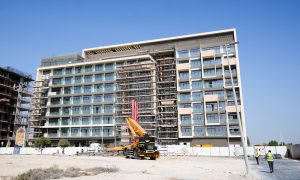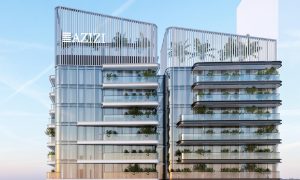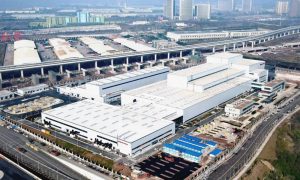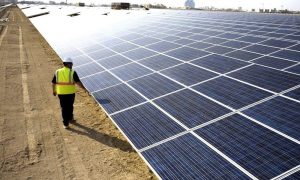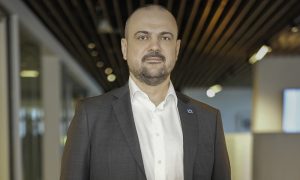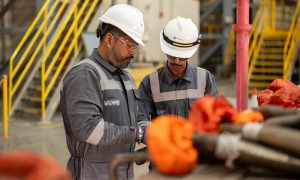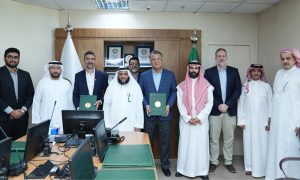Achieving Net Zero is a Middle Eastern imperative for a sustainable future
By embracing innovative practices, collaborating across sectors, and investing in technology and education, the industry can be shifted to be more sustainable says ACCIONA’s Marcos Dorao

As the Middle East faces the mounting impacts of climate change, the construction industry stands at a pivotal moment. Responsible for a significant share of carbon emissions, this sector must adapt to the realities of a warming planet, and the pathway to a sustainable future is clear: achieving Net Zero. This ambitious goal entails balancing greenhouse gas emissions with equivalent sequestration or offsetting, ensuring a viable future not just for the industry but for society as a whole.
The urgency of the challenge
The construction sector in the Middle East is projected to grow substantially, driven by urbanisation and economic diversification efforts. However, it also accounts for a considerable portion of the region’s carbon emissions, with estimates suggesting that construction-related activities contribute around 30% of total emissions in some Gulf Cooperation Council (GCC) countries. As climate-related challenges intensify—ranging from extreme heat to water scarcity – failing to act could have dire consequences for both the environment and economic stability.
The urgency of achieving Net Zero is underscored by regional commitments to climate action. The UAE, for example, has set ambitious targets to reduce its carbon footprint and has committed to reaching Net Zero by 2050. However, these goals require immediate and significant changes in the construction industry.
Innovative approaches to Net Zero
Achieving Net Zero in construction in the Middle East requires a multi-faceted approach that incorporates innovative technologies, sustainable materials, and holistic design strategies. Here are a few examples:
Utilising Sustainable Materials: The Middle East has abundant resources that can be harnessed for sustainable construction. For instance, utilising local materials such as rammed earth and recycled aggregates can lower the carbon footprint associated with transportation. Innovations like carbon-capturing concrete are also vital for reducing embodied carbon.
In line with this, ACCIONA introduced for the first time in one of its project last year the use of renewable biofuels generated from hydrotreated vegetable waste oil to power heavy machinery for civil works, in a pioneering initiative aimed at decarbonising infrastructure construction. Renewable biofuel generated from hydrotreated vegetable oil (HVO) is a renewable liquid fuel that has similar properties to traditional fossil fuels but produces 90% fewer emissions. The remaining 10% mainly comes from the emissions released by the HVO production process instead from its consumption. The implementation of this pilot project reduced 1,000t of CO2 emissions from the project. It is important to highlight that its continuous use for the project curbed most 40% the projected greenhouse gas emissions of ACCIONA’s Construction business in 2023.
Speaking of sustainable materials, it is also worth mentioning the use of low-emissions circular steel in another of our projects achieving two fundamental sustainability objectives: on the one hand, it advances circularity in the use of materials, as the steel that is obtained during demolition in the project will be returned in the form of material to be used. On the other hand, this achieves a reduction of more than 40% of the emissions associated with the product compared to the average of steel mills with similar technology. In addition, using this type of steel avoids the release of over 1,900t of CO2 emissions from the equivalent use of a conventional product.
This measure is aligned with ACCIONA’s position as a provider of sustainable infrastructure and renewable energy solutions, in the spirit of the various initiatives it carries out to reduce emissions linked to its supply chain.
Another important measure to be taken to achieve Net Zero in construction is the use of electrical construction machinery. We became the first Spanish construction company to acquire this kind of sustainable machinery, an initiative part of the company’s decarbonisation plan. Specifically, we purchased four telescopic handlers and two rotating dumpers, which will mainly be used in urban construction projects. Thanks to their 100% electrical operation, great improvements are made in reducing pollutant emissions and noise levels on site. Overall, it is estimated that the use of this electrical machinery could reduce up to 100t of CO2 emissions.
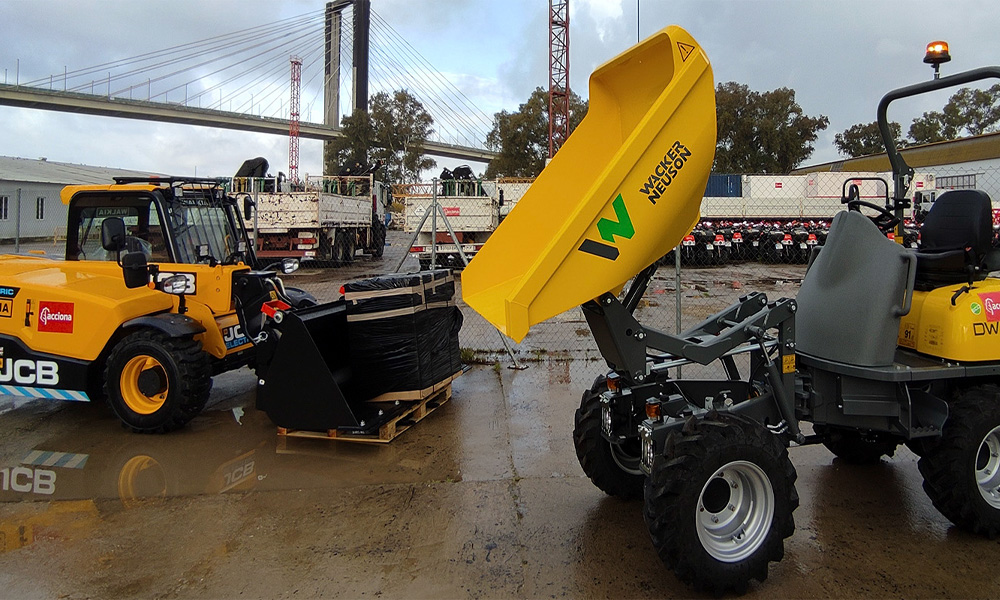
In line with the latest scientific studies on climate change, we have undertaken to reduce ACCIONA’s direct emissions and those generated by our energy consumption by 60% between 2017 and 2030, aiming at the most ambitious target of the Paris Climate Agreement to limit global warming to no more than 1.5-degrees Celsius above pre-industrial levels.
Among the measures that we have implemented to achieve this target, the company has launched a ‘decarbonisation fund’ to finance projects with potential for significantly reducing emissions. This purchase of electrical machinery and the use of HVO in heavy machinery (previously explained) are some of the initiatives that will receive support from the company’s decarbonisation fund.
Both are part of ACCIONA’s emissions reduction program within its 2025 Sustainability Master Plan and are financed by ACCIONA’s Decarbonisation Fund. The purpose of the fund is to support initiatives that promote carbon neutrality in the company’s operations. Last year in 2023, this fund contributed to the financing of 17 decarbonisation initiatives in a variety of global ACCIONA projects.
Policy and Industry Collaboration
To drive meaningful change, collaboration among policymakers, industry stakeholders, and the public is essential. Governments in the Middle East must establish clear regulations and incentives that promote sustainable practices. For example, building codes could be updated to mandate energy efficiency standards, while financial incentives could encourage the use of green materials and technologies.
Regarding this, I don’t want to miss this opportunity to mention that we have just now secured a new sustainable financing worth $327mn to fund key projects aimed at reducing carbon emissions and fostering sustainable growth in the Gulf Cooperation Council area (GCC). The sustainable financing is structured as a green loan with local impact, aligned with ACCIONA’s Sustainable Impact Financing Framework. The margin of the financing is linked to a local impact initiative, which aims to boost sustainable construction by supporting local suppliers to develop and produce lower or zero-carbon building materials, such as cement, steel and concrete.
Challenges to overcome
While the path to Net Zero is filled with opportunities, it is not without challenges, particularly in the Middle East. The initial costs associated with sustainable practices can deter investment, as many stakeholders perceive green construction as more expensive. To overcome this barrier, it’s vital to communicate the long-term economic benefits of sustainability, including reduced operational costs and enhanced property values.
Additionally, the construction industry faces a skills gap in green building practices. As new technologies and methodologies emerge, it is crucial for the workforce to be equipped with the necessary knowledge and skills. Educational institutions and vocational training programs should prioritise sustainability in their curricula to prepare future construction professionals.
Achieving Net Zero in construction is not just an industry goal; it is a societal imperative for the Middle East. As the region confronts the realities of climate change, the construction sector must take bold, transformative actions to reduce its carbon footprint. By embracing innovative practices, collaborating across sectors, and investing in technology and education, we can shift the industry toward sustainability.
This journey will require commitment and cooperation from all stakeholders, including architects, engineers, builders, and policymakers. Together, we can create a built environment that meets the needs of today while preserving the planet for future generations. The time to act is now, and the construction industry in the Middle East must lead the charge toward a sustainable, Net Zero future.
